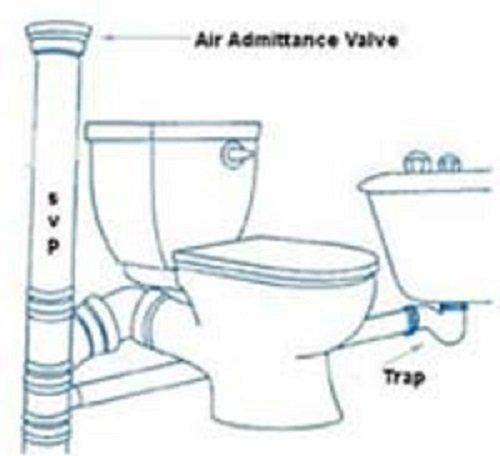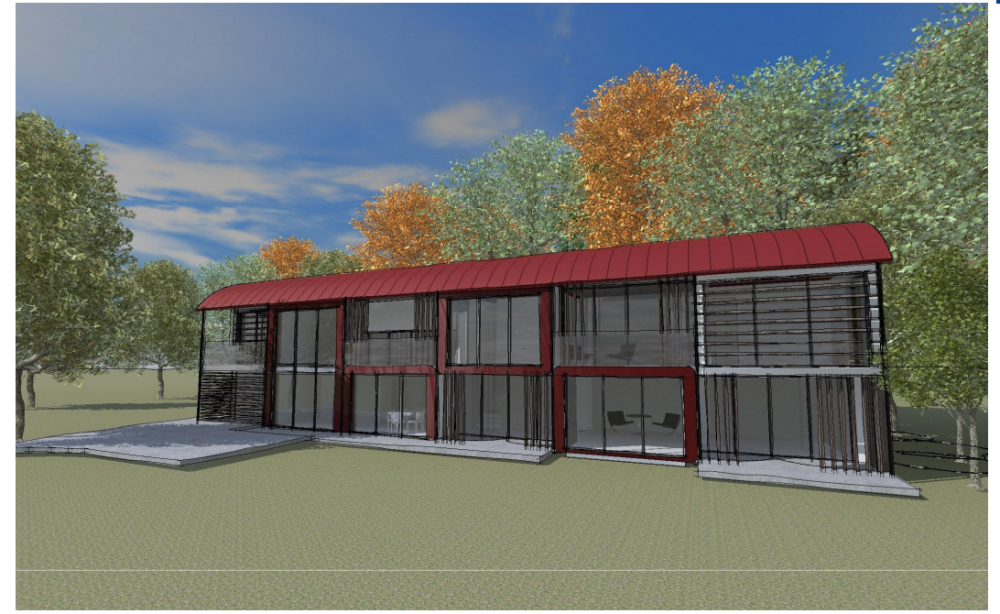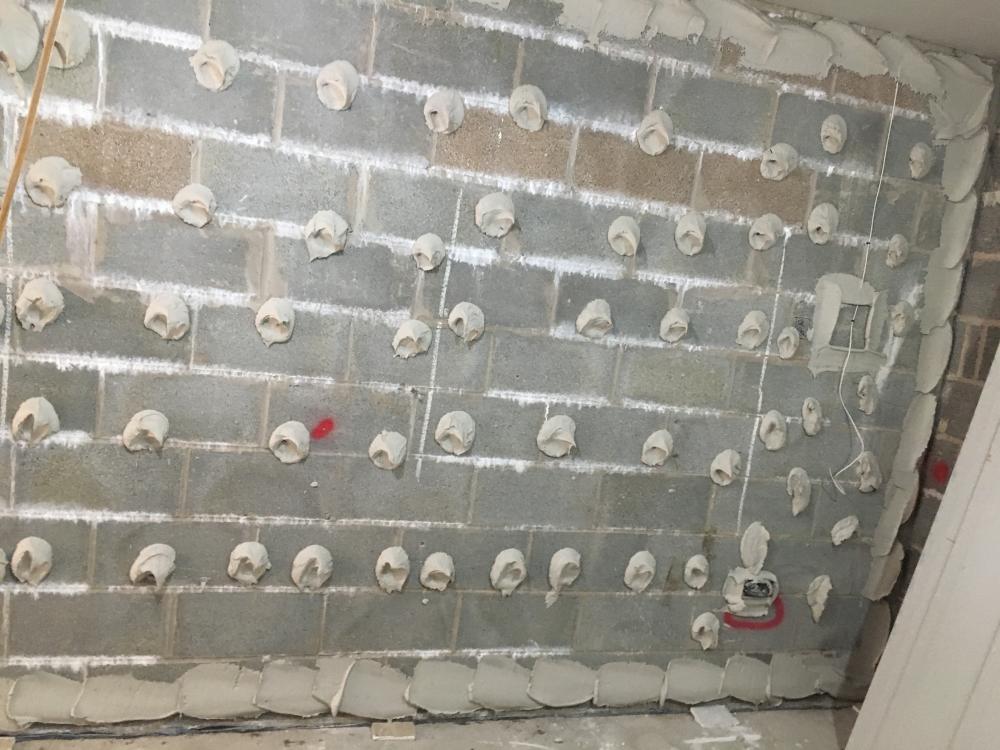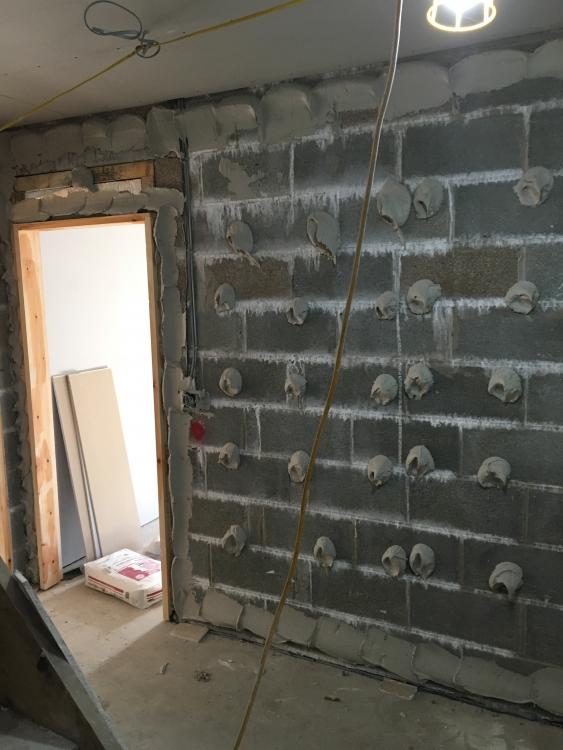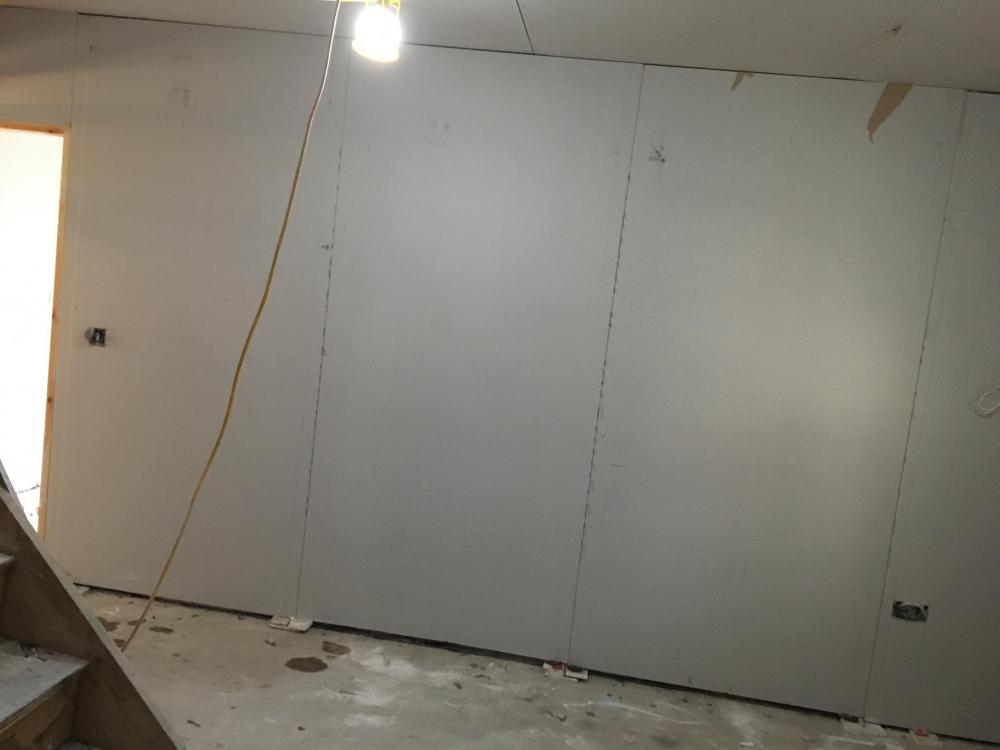Leaderboard
Popular Content
Showing content with the highest reputation on 09/24/19 in all areas
-
4 points
-
3 points
-
I’m not sure tapped holes are acceptable but an engineer would be able to advise2 points
-
2 points
-
Maybe this company can help - https://www.hamsterbaskets.co.uk/products/bespoke-products/ Their tag line is "If it's wire and you can sketch it, we can make it"2 points
-
According to this site - https://www.bauen.lt/keraminis-blokas-wienerberger-porotherm-44-p-s the blocks have thermal conductivity of 0.16W/m.K and thus a 440mm block would require at least 100mm PUR/PIR to reach the maximum Passivhaus U-value Given the actual shape of the blocks do they have the same thermal conductivity in both horizontal directions?1 point
-
About 100% premium to on site mix however if you’re thinking slab then think again as you can’t mix a full house slab by hand. I have used a different self compacting concrete but do not get drawn into the sales patter that it self levels as it doesn’t. You need someone skilled with a bull float to get it flat.1 point
-
As long as you can rod unblock you can put it wherever you want, there are no hard and fast rules, you need to demonstrate a method that works. With your long house wouldn’t having rodding eyes at the far end be a long way to go, surely your second drawing is fairly simple.1 point
-
1 point
-
It's much easier and quicker to check every 3 blocks assuming you have a good long level, 900mm. The top edge you can see how good they are by how close they are to your line. Then you plumb the middle of the first and 3rd block then use the level as a straight edge across the 3 blocks from the middle points to make sure you haven't the bottom edge in to far. The easiest method is to set your trowel on the wall flat and run it up and down to clean the snots. If it catches a block then it's sitting out to much.1 point
-
Those are for painting and nothing more. Personally I bought some tower scaffold very similar to this https://rover.ebay.com/rover/0/0/0?mpre=https%3A%2F%2Fwww.ebay.co.uk%2Fulk%2Fitm%2F352569337738 Probably condemned by h+s but they work very well. Then get a bunch of 13' scaffold boards ( you can always cut them into a 5 and 8 later if you need to) I have heard good things about kwikstage on here but never used or bought any personally.1 point
-
Good news. In the grand scheme of things the PC don't usually have much clout, unless there is an agreed Neighbourhood Plan in place (and even then that doesn't carry as much weight as the government intended when they introduced them), but if the PC have the friendly ear of the local County, or Unitary Authority, Councillor then they can request that the application be called in, which then means going to the planning committee, rather than being decided under delegated authority by the planning officer. Planning committees can be a bit of a crap shoot, in my experience, as inevitably personal views held by Councillors come into play (even though they shouldn't, really). The consultees that often seem to have a fair bit of clout are ones like highways, conservation and sometimes the fire officer, or even the Environment Agency. In our case most of the issues we spent a lot of time on were raised by the Environment Agency (flood risk), the Conservation Officer (pretty much anything and everything she could think of), highways (easy, just concerns over visibility really) and the fire officer (made recommendations for sprinklers but they weren't mandatory and so didn't get included as a condition). Worth reading these sort of consultee responses carefully as they are published, because it seems that they often end up as conditions, and some can cause later problems. For example, the EA mandated levels above Ordnance Datum for our finished floor level, parking area element of the drive and garage floor. Highways mandated a maximum gradient for two sections of the drive. It turned out that these two conditions were mutually exclusive - to get the gradients stipulated by highways the levels needed to be lower than those stipulated by the EA. We resolved it fater getting consent (because I didn't spot the problem earlier), but with hindsight it would have been easier to have resolved this conflict with the EA and highways. We may even have got the EA to allow us to make the levels a bit lower than the current 1.5m above the 1 in 100 year flood risk level, which would have made a useful difference to the usable area of the plot.1 point
-
Why would he be moving the scaffolding every hr?? Going by his 2.5m height he would be safer building it 6 course high from the ground then the other 5 from the scaffolding. Lifting blocks upto the 7th course is where it can all go wrong so better to leave that bit out. Your going slow problem is due to either one of 2 things. If the motar is skining over then your mix isn't right or you're bedded to much ahead of yourself. If your tapping away like a Morse code operator then your bedding isn't right. The weight of the block should take you to the line with a tap depending on how level you set the block down. You should only use the level to check for plumb every 2/3 course not every block.1 point
-
1 point
-
1 point
-
I would be 99% certain that one does not have an inverter. I am pretty sure we discussed that model before and a previous advert had a picture of the electronics with a big motor start capacitor. The disadvantage of direct drive is the compressor is working all or nothing. So it will likely be noisier, will have a high start up current which your DNO won't like and may cause a noticable dip to your lighting when it starts, and it won't be able to modulate it's output temperature as well. I would keep looking until you find one that is definitely inverter drive and says so. Bargains do come up from time to time.1 point
-
1 point
-
Hi David, I would be very interested to see how this turns out for you. We keep being steered away from frameless balustrades. We’re told that over time the panes shift slightly and it’s difficult to keep them aligned. This seems to be more of an aesthetic issue than a structural one.1 point
-
I was going to say the same as peter, the thickness of your box section may not be thick enough to resist pull out, I have fixed handrails before ( not glass ) and the box was cut and internally plated to add thickness to the bolt areas. 25mm thick I seam to remember but it is many years ago.1 point
-
I would not trust those to stand on let alone anything else, i.e. load with the weight of some blocks and mortar. My builder is using something like these for the lower bits: https://www.toptower.co.uk/builders-trestles-swivel-leg.html I would say his a much more heavy duty. A small scaffold could also be bought and made up in 2 sections with boards inbetween. http://www.scaffold-towers.net/summit_size.php1 point
-
Whenever I would say. Many people on here have moved in way ahead of any completion certificate being issued. You could ask for a temporary habitation certificate if you want to really make it official but that will no doubt trigger things such as council tax or whatever. You can use that certificate to trigger your VAT reclaim however if you want the money back before you completely finish.1 point
-
Avoid those. Even if they work they probably won't for long when water gets in and then the action of frost.1 point
-
1 point
-
1 point
-
1 point
-
Because they come as a kit with pipes that have to be connected (like @JSHarris little aircon unit) you can put the evaporator outside under a suitable cover.1 point
-
You won't want a constant run off from your supply pipe as that will kill your water pressure. Either run a supply pipe and a separate overflow pipe, or a high tech solution a level sensor and a solenoid operated drain valve when the tank gets "full"1 point
-
1 point
-
This sounds like a job for one of those "kit" fridges that you build into boats.1 point
-
As described above, once set up it’s pretty quick. I was also doing 50mm cover strips and also cutting a 45 degree cut of the bottom of all my face boards. If your going with board on board then I personally don’t think it’s that important as the chances of anything but a tiny amount of water seeping in is all your going to get and ventilation should keep that sorted. I was only putting 50mm cover strips over the main boards as that’s the design I like, I live in a very windy location so you will get some water being driven behind but it will also dry quick as soon as it stops raining as it’s always bloody windy ! My main roof on the other house is 100 years old and made with untreated softwood sarking, it gets wet every gale as water blows up under the slates but it also dries just as quick, so this is my thinking about not being to worried in my situation. Location dependent as always. Totally agree for me it was only based on cost, I could buy 22mm x 150mm treated sarking much cheaper than I could buy the equivalent amount of timber in 50mmx22mm or 75mmx22mm (could not get 75mm size anyway) so for me my time is cheap as it’s just forfun and is my forever home plus I am coin poor so cutting it up with a volunteer and painting the cut faces was the way to go.1 point
-
Nick I have worked in a couple of houses that had cool rooms with glass walls and doors, big enough to get 20-30 people inside, luxury houses £5 million type places, so you must be able to get the kit.1 point
-
1 point
-
Can your window film bloke supply you with a 10 sq cm sample of the opaque version? Out of sight... Emoticon required of lacrimose crocodilian ?.1 point
-
1 point
-
@JSHarris I think I remember the thread as well. That's pretty much what we've done with the exception of the heat pump. Got a joiner to build an airtight door and the envelope is the same as the rest of the house (but keeps the larder separated from the rest of the house if you get my drift). The vents can be closed if necessary. In all likelihood this is not really replacing a fridge, more just a big store cupboard. If I had free will I'd probably not have bothered, but I was overruled at the design stage!1 point
-
I think this has been discussed here before, but I can't find the thread. Any pantry built like this needs a well insulated door, and all walls that face into the thermal envelope, ceiling, floor, etc need to be well-insulated and sealed. If including vents to outside then the pantry door also needs to be airtight, so the easiest solution might be to just use a decent external door as the pantry door, as that will have the required seals and be reasonably good thermally. Another approach might be to just build the house with a "notch" in the external thermal envelope, that runs around where the pantry will go, with an uninsulated external wall over the notch. Whatever approach is used, it's worth remembering that the outside temperature will often be well above the temperature needed for a pantry for a fair part of the year, so the pantry may well end up warmer than the rest of the house at times. If I were going to do this, then I think I'd forget trying to put vents to outside, forget trying to use a thin wall to outside, and just build a well-insulated cupboard wherever I needed it to be, and fit it with a decent door, with an airtight sealing system (probably a suitably redecorated external door). I'd then just fit a small air-to-air heat pump in it, to keep it at a constant temperature. Doesn't need to be anything big, the sort of cooler units fitted to small delivery vans would be about the right size, might even be a bit too powerful. Failing that, a small monoblock ASHP, supplying chilled water to a cold shelf in the cupboard would probably do the job. Still cheaper and easier to just buy a larder fridge though...1 point
-
What about a bevelled fence rail. https://www.mickgeorge.co.uk/cant-or-bevelled-fence-rail.html1 point
-
Easy to work out. Incoming mains water will be at around ground temperature, so ~8 deg C. Just calculate the heat input to the pantry using the pantry surface U values, then work out how much mains water will flow through the pipe for a typical day (roughly 150 litres per person per day) , then use the heat capacity of water to see just how much heat the cold water will extract from the pantry. I don't have time to do the sums now, but if I had to guess, I'd say that the cooling effect would be about the square root of bugger all...1 point
-
Jeremy, you’ve slipped in my estimation. I was sure you had a leftover ex military atomic clock in the shed that you used to synchronise the clocks.1 point
-
Due to lack of knowledge and time I plan to get it all from Wunda, it sounds like they are competitive on price and have good product. I do plan to lay it myself. It sounds like I may as well go for a single zone, as I won’t loose anything & it will save on controls.1 point
-
Here is my project going up just south of Newmarket. Just under 3000sq ft and is an old hay barn being converted to our new house ! In about 0.7 of an acre. Never done anything like a self build before, but hugely excited and hugely nervous in equal measure ! Yes, lots of glass and all south facing. I guess I'm going to need some serious help from the collective gurus on here please, but I promise I won't become a pest ! Thanks all.1 point
-
Yes, although our Local Authority Councillor repeatedly states that this is not the case (she's wrong, as it happens). Living in a rural area, with narrow single track lanes, overgrown hedgerows are a constant agenda item at Parish Council meetings, and we have a standard notice in the Parish magazine every month reminding people of their obligation to keep their hedges trimmed, where they may obstruct lanes, or visibility (this is universally ignored, though). Before we had access to the (excellent) Wiltshire Council Parish Steward scheme (a means by which Parish Councils can directly instruct a contractor employed by the council to do odd jobs) we had to use contractors for tasks like maintaining the playing field, playground and communal areas that were on an approved list, which meant, in part, that they had provided evidence to the council that they held the appropriate level of indemnity cover. In addition, anyone doing tasks that involved working on the highway, like painting the numerous bridge railings we have (for some reason our stream meanders back and forth under the lane in a few places) had to demonstrate that they held the additional cover (and, I think, level of competence, safety signage etc) necessary for working on the highway. I can get chapter and verse on this tomorrow evening, as by coincidence this is an agenda item at tomorrow's PC meeting, and one of my colleagues has been researching it in depth, to see where we stand when getting some of our footpaths repaired by some local volunteers.1 point
-
The topic of ownership of land, hedges etc is one that has been vexing our Parish Council for some time, following some serious flooding caused, in part, by a riparian owner not undertaking their duty to keep their part of the stream clear from obstructions. The land in question was a strip alongside a lane, with an overgrown hedge, full of alder and willow, that had partially grown into the stream. First off, Parish Councils and villages rarely, if ever, own land, and almost always never alongside highways. They may look after land in trust (for example a gifted village hall or some such), but the land almost always belongs to either a defined owner, private or commercial, or the County Council/Unitary Authority. Almost all verges that are maintained by the council highways department are owned by the County Council/Unitary Authority, and as such are a part of the highway. Often the council highways department won't have definitive records as to what does belong to them and what doesn't. Sometimes this vagueness can arise from something as simple as a request to cut a verge. In the dim and distant past, before we owned our plot, and when it was badly overgrown, the Parish Council submitted a request to the County Council (as it was then) that the verge in front of our house should be included in the programme of verge cutting carried out by the Council's contractors. When we fenced this off at the start of our build there was a bit of an issue with the contractor telling the council that this section of verge was no longer accessible. It took several phone calls to resolve, but finally a letter was found from the Parish Council requesting that the County Council keep this verge cut, but acknowledging that the owner of the land had not responded to requests from them (not surprising, he was a virtual recluse). I then managed to get the Unitary Authority highways department to remove our bit of land from their verge cutting schedule (although they have started cutting it again now, for some reason). I suspect that the elderly neighbour may well recall some informal agreement from the past relating to keeping this area cut, and is now using that recollection to make a point. I doubt that what he says is correct, but suspect that it may well be a real struggle to determine exactly who owns what and what rights there may be over it, as often it seems these get lost in the mists of time (record keeping does not seem to be a local authority strong point when it comes to things like this, it seems).1 point
-
I think that statement must be a result of some confusion somewhere along the line. It's a few years since I've been involved with this stuff but I have done mapping software working directly with OS [¹] people and data (in the late 1990s) and then (early 2000s) on more general geodetic software (for the aviation industry) where the partner company was a consultancy separately involved in the update to the British Grid Reference system. From the 1930s until about 2000 (I think it was) the OS grid was based on the Airy ellipsoid. The positions of various main trig points were determined (with sextants, etc) then other secondary trig points and actual points on the ground were derived by triangulation assuming a particular shape for the Earth (or, at least, the Earth's gravitational field). This was a pain because positions were not well defined with respect to GPS surveying which everybody used - things could be a metre or so out of position and the GB is moving, along with most of the rest of NW Europe, at a small but not completely insignificant rate (25 mm/year in a NE direction, IIRC) relative to the ITRF (International Terrestrial Reference Frame) which is linked to the WGS84 ellipsoid that GPS uses. Consequently, around 2000 the OS grid was redefined as being relative to the ETRF (European Terrestrial Reference Frame) which is a simple, but time dependent to allow for continental drift, transformation from ITRF. To allow for differences in the ellipsoids used and the errors in the old survey networks a separate correction is applied (OSTN - Ordnance Survey Transformation Network) to get the actual grid positions. It uses quite a big table to derive the correction for any given point as the errors involved are not uniform. I can believe that this has resulted in grid shifts of up to about 1 metre in some parts of the island, the old OS Grid was only defined to about that level of accuracy anyway. I very much doubt that there's been a systematic shift of 1 metre across the whole country. [¹] BTW, it's the Ordnance Survey, meaning guns, etc, not Ordinance Survey meaning by-laws. It was set up to provide the army with good maps of their own country for fighting Jacobites and potential invasions by Napoleon. What's usually referred to as the OS is for Great Britain only so doesn't interest itself in the “whole of the UK” - there is/was a separate OSNI.1 point
-
Surely you can apply for a CIL exemption if you're a self builder and planning on living in it for 3 years?1 point
-
It's one of our trials Buccaneers, and the paint scheme was designed to show up well on black and white high speed cine film. For some reason black and yellow gives the best contrast on FP4 film, which is what we used much of the time (usually pushed from 125 ASA to 400 ASA in developing).1 point
-
I’ve made a start on the dabbing today To those who already know this ignore this post But we’ve had a few questions about air tightness and foam on block Ive taken a couple of pictures If you are paying a contractor to do this and it is any different than pictured Your not getting what you have paid for and air tightness will be an issue further down the line Skirtings are decorative and shouldn’t need to be bunged up with foam1 point
-
Hi all Have had a quick look around but cant find my answer. Plasterboarding is underway (boarders do skim too so all one contractor). We are using regular stuff on the ceilings but Gyproc Habiito on the walls. My chippe and sparky pointed out to me what they considered to be poor workmanship on the boarding. My project manager just says he looks at a finished job not a part done one. He mentioned holes to plasterers who said they would be taped and we would never know but I am worried we have huge holes around sockets, I can put my hand in one, some of the mvhr outlets have been cut far too big and the pipes taped on a skew....I can see into the roof void and the membrane holes are so big. Boards in corners have been damaged when put up and holes taped over. We know nothing about plasterboarding other than having had work done in our previous house it was a much better standard. Should I ask them to re do problem areas before they get to skimming.......and one more thing would you expect a large ceiling to be skimmed in one go or in sections. Some pics attached. Thanks for any help. Liz1 point
-
1 point







